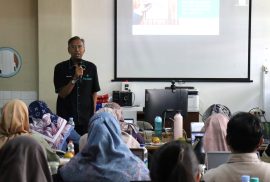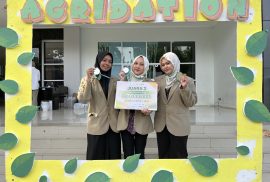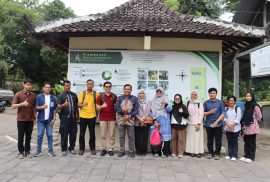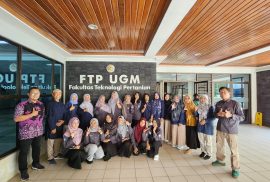
A sensory evaluation practicum using the napping method was conducted in the Usen (Sensory Evaluation) class on September 18 from 11.00 to 12.40 WIB. The practicum was attended by 103 students from the 2023 cohort, all of whom are compulsory participants in the course. Through this activity, students gained hands-on experience in evaluating food products using an applied sensory approach.
The napping method is classified as a form of rapid descriptive analysis, which allows panelists to provide quick and comprehensive sensory descriptions. In this practicum, students acted as panelists to evaluate five candy samples by recording sensory parameters, including taste, flavor, texture, and appearance, on small pieces of paper. These notes were then placed on a large HVS sheet to form a napping map. The principle applied was based on proximity: samples with similar characteristics were placed closer together, while those with greater differences were positioned further apart.
The resulting napping maps created by students then served as the basis for data analysis. Students were instructed to process the data using XLSTAT and R software, producing a visualization through Principal Component Analysis (PCA). This analysis provided insights into the patterns of similarity and difference among the samples according to the panelists’ sensory perceptions, while also introducing students to multivariate statistical techniques commonly applied in food research.
Through this activity, students were not only trained to sharpen their sensory awareness of food products but also taught how to connect qualitative assessments with quantitative data analysis. Thus, the sensory evaluation practicum using the napping method serves as an integrated learning platform that combines theoretical understanding, practical skills, and data analysis proficiency—ultimately supporting the development of student competence in the field of food science and technology.
Written by: Okta I. Latifa




